Exploring Croatia's Intangible UNESCO Heritage: Lace-Making from Hvar, Pag and Lepoglava
June 19, 2022 - Continuing her look at the intangible UNESCO heritage of Croatia, Filipa Marusic looks at three Croatian communities whose heritage is bound by lace.
There is one UNESCO protected heritage that unites these different regions with same heritage – traditional lace making. This unique handiwork that presents different types of lace comes from island of Hvar (aloe lace), island of Pag (needle point lace) and the small town Lepoglava in northern Croatia (bobbin lace).
.jpg)
Lacemaking in Croatia dates back to Renaissance times, and it has been UNESCO intangible heritage since 2009, as well as ethnographic and cultural heritage for Croatia. The main difference between lacemaking in Croatia and other European countries is in the makers of the lace. In Europe, lacemaking was exclusively done by nuns in convents and nobility, while in Croatia is primary done by countryside women in small villages who got their knowledge from convents and mansions. Treasuries of Croatian monasteries, convents, churches and museums show lacemaking was first developed there and then it was shared with common people.
.jpg)
These women used lace for traditional clothes and furnishing and as an additional source of income. The technique and appearance is a bit different to lacemaking in Europe. Lacemaking has a centuries-long tradition in Croatia, and the skill is passed on from generation to generation in families but was also taught in schools. Lace schools lasted until the mid-20th century on Pag and in Lepoglava.
One of the definitions of lace is “handmade openwork made from linen, silk, aloe, silver and gold thread “. There are many different kinds of lace but the finest lace in terms of craftsmanship and quality is needlepoint and bobbin lace. The development of lacemaking has its roots in different textile handicrafts, like weaving and embroidery. The type of lace depended on cultural influences in the region. As an example, needle lace from Pag was spread in other Mediterranean countries while bobbin lace was influenced by central Europe.
.jpg)
The ribbon bobbin lace from flax fibres from Lepoglava was used as decoration for the folklore costumes and clothes or for sale at village fairs. To celebrate this lace making tradition, there is an International lace festival each year in Lepoglava. The lace strips were used as trimming for different clothes and the patterns are mostly geometrical, animal and floral. For the lace heritage in Lepoglava it is considered that Paulins order brought it to peasents. The golden era for lace making is definitely end of 19th and beginning of 20th century thanks to Zlata pl. Šufflay and Danica Brossler who held classes, workshops and a school of lacemaking. The lace from Lepoglava was sold on different fairs and exhibitions, in Zagreb, throughtout west Europe. The international lace festival is held from 1997 in Lepoglava and its 20th anniversary was in Septmeber 2016. They have various lacemaking events, live music, international projects which make this heritage even more valuable. There is also a lacemaking high school which nurtures lacemaking heritage and lacemaking cooperation where new generation of lacemakers is formed and they are the ones who keep this tradition.
Pag needle lace is ornamental decoration which first appeared in folklore textile as garments, tablecloths and clothes and then as an independent decoration. It has a spider web pattern and geometrical motifs and the lace making is taught by elderly women. It characteristic form is reticella and gothic geometrical patterns which are the main characteristics of renaissance lace – this was quite common on islands. The origin of the Pag lace comes from city of Mycenae, and the lace-making tradition dates back to the late 15th century when it was first connected to Benedictine convent that also held lace making school. The convent keeps the lace collection with more than 127 exhibits throughout 150 years and it presents Croatian cultural heritage. Lace from Pag is unique because it doesn’t have set template or blueprint but the way of making it is being transmitted from generation to generation. Pag had a lace school from beginning of 20th to mid 20th century, and it produced more than 200 new lacemakers. Lace making is part of the school programme – this, lace association and lace festival are important factors for preserving this heritage on Pag island.
.jpg)
The third lace inscribed as UNESCO heritage, is Hvar lace and it is made from aloe in form of a net or some other pattern. This lace is still connected to the Benedictine convent unlike lace from Lepoglava and Pag. The aloe leaves are picked during a specific time of the year and are processed to get this white thread. Nuns from this convent came from Pag in the 17th century when the lace-making tradition was more than 100 years old.
Lace as part of clothing is mostly used as ornament on shirts and as part of traditional Pag costume called “pokrivača”. Pag lace is successfully implemented as part of jewerly. The lace is used as decoration for bed linen and as part of church vesture. The most common way of displaying lace is to put an ornament on the table or hang it on the wall and this is common both for Pag and Lepoglava lace. In this way, the beauty of lace is the best presented.
Source: Ministry of Culture, Culturenet – Eckhel N., Ethnographic museum Zagreb, Paška čipka, Lepoglavska čipka, Tourist board Lepoglava, Tourist Board Hvar, Tourist Board Pag, Festival čipke Lepoglava
Photos: The Ethnographic Museum, Zagreb; The Museum of Varazdin; Paška čipka, Lepoglavska čipka, Tourist board Lepoglava, Tourist Board Hvar, Tourist Board Pag
.jpg)
.jpg)
.jpg)
.jpg)
.jpg)
.jpg)
.jpg)
.jpg)
.jpg)
.jpg)
Beginning of Hvar Main Tourist Season Excellent So Far
June the 14th, 2022 - The beginning of the Hvar main tourist season has been excellent so far, with the Suncani Hvar hotel chain rubbing their hands with satisfaction.
With two pandemic-dominated years causing issues and very valid concerns among all those working within the country's most economically powerful sector - tourism, continuing news about excellent tourist numbers during the pre-season and now during the beginning of the height of the summer season are more than welcome.
As Morski writes, things are looking great for the Hvar main tourist season, as there are 1,200 tourists in the aforementioned company's hotels, reservations so far have been very good, and June so far is better than the pre-pandemic June of 2019.
The current visitors to the beautiful island of Hvar come from all over Europe, including Spain, Britain, and Germany. Tourists accustomed to inflation in their own countries are no longer bothered by the current higher Croatian prices, and they aren't complaining about ferry ticket prices or about prices in restaurants and cafes.
''The prices are completely fair,'' said one tourist.
''Hotel occupancy is over 90 percent, most guests at the moment have come from the markets of the United States, Great Britain and other European countries, and in principle they are all guests of higher purchasing power. They stay 3 to 4 days, they like to eat and drink well and they also like excursions and boats,'' explained one employee of the Suncani Hvar hotel chain.
While Hvar has been doing well to gradually begin moving away from its title of the ''Croatian Ibiza'', this Central Dalmatian island continues to be a mecca of good fun. Nightclubs and beach bars are still recovering from the coronavirus-induced damage and are expanding when it comes to their offer.
Everything is ready for another Hvar main tourist season during which this popular island will surely be at the top of various top destinations, both in a global and European sense.
For more, make sure to check out our dedicated travel section.
International Meeting of Travel Influencers Heads to Hvar and Brač (PHOTOS)
PR TEXT - June 8, 2022 - The International Meeting of Travel Influencers, organized by the Split-Dalmatia County Tourist Board and editor of Croatian Hotspots magazine Maja Zlokić, entered its third and fourth day. After Split and Makarska, the content team moved to the islands of Brač and Hvar.
The visit to Brač began with the emblematic Bol and Zlatni Rat beach, whose views under the slogan 'Symbol of the Adriatic' have long represented domestic tourism in the world. Elevated to the next level with a magnificent bird's eye view, the influencers formed a heart with their bodies to be photographed on the recognizable horn of Zlatni Rat, which changes shape and position depending on the wind.

Wine tasting and bites at the famous Bol winery "Stina, where wooden barrels hold the finest varieties of award-winning Stina wine.
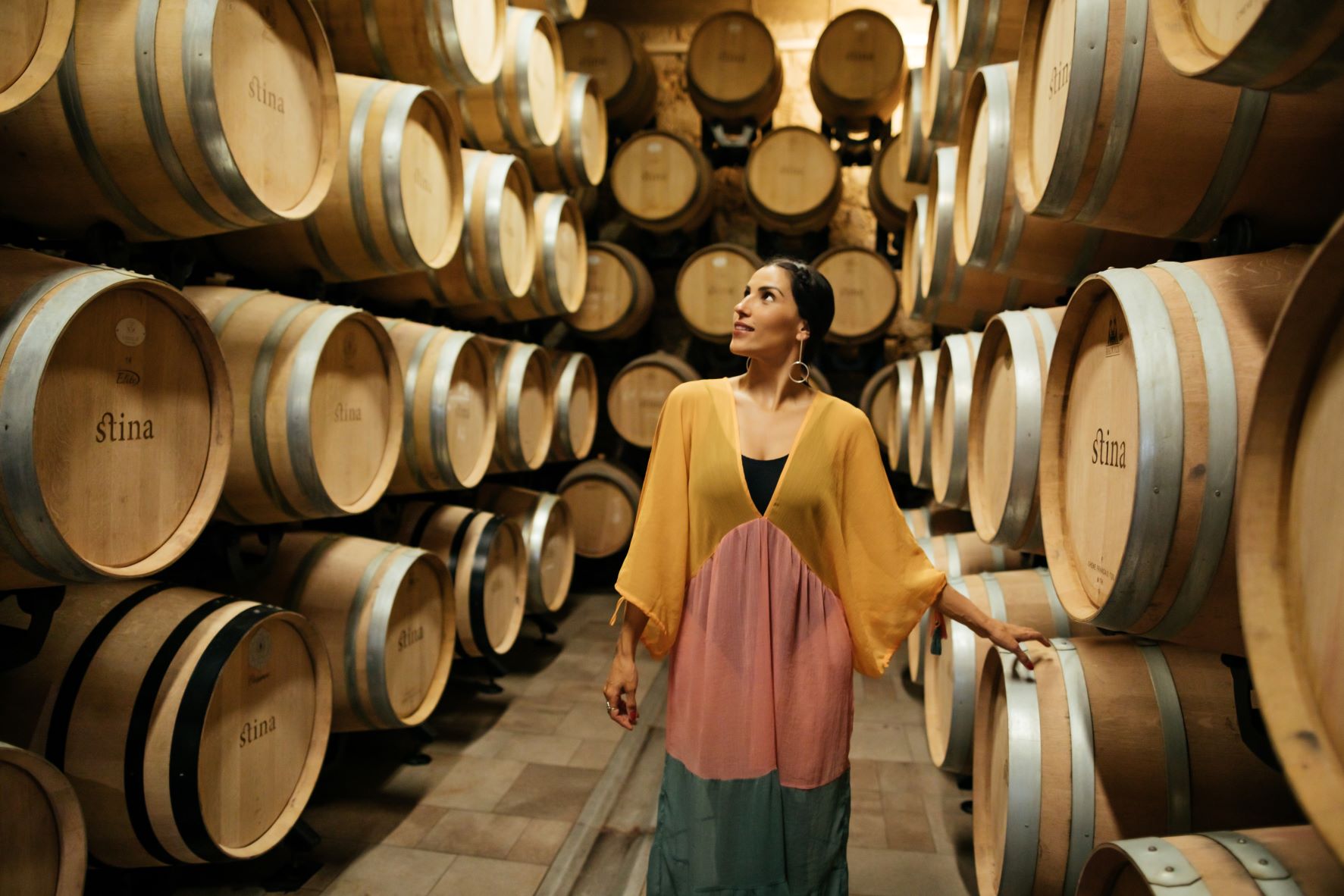
After tasting plavac, opolo, and prošek, the influencers left for Hvar. The mayor of Hvar, Rikardo Novak, and the head of the Department of Culture, Katija Vučetić, welcomed them on Croatia's sunniest island, showing them some of the most precious gems of their culture, such as the famous Arsenal and the Hvar Historical Theater. They used their expert eye to convey the beauty of the interiors. Complemented by a musical background, they managed to peek inside, dominated by red velvet and gold. The influencers pointed out that wherever they are photographed, they must indicate the location to inform their followers of where they are, which facilities to visit, where to drink the best coffee, and eat well, which is the driving force of this project.
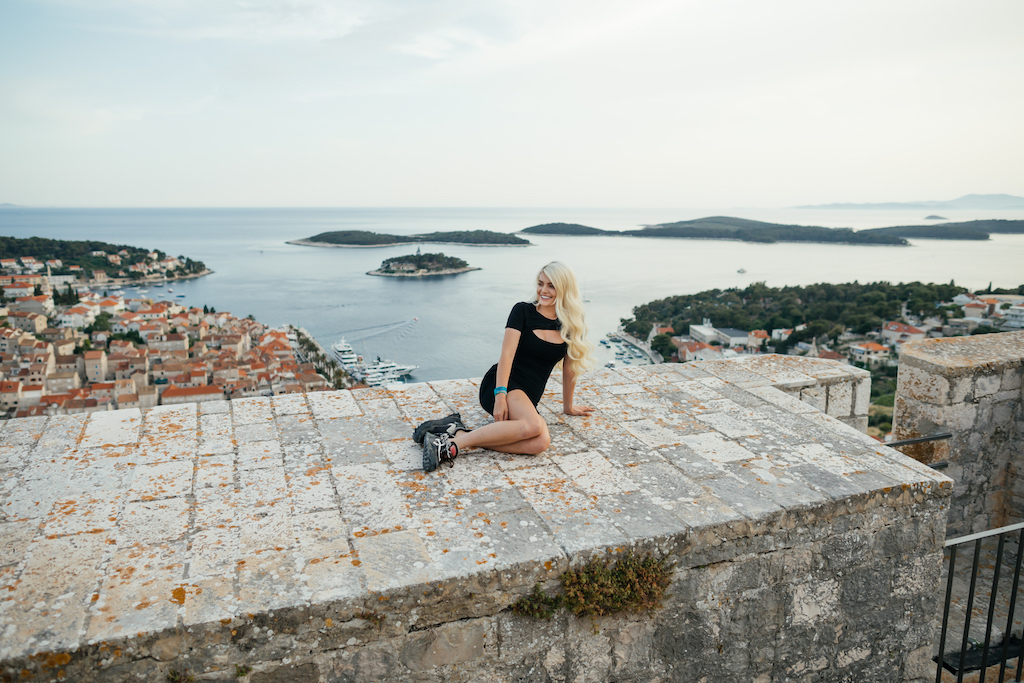
At sunset, they went to the Hvar Fortress Fortica. Apart from the magical ambiance, the group was delighted by Tommy catering and Plančić winery. In addition to the famous Plavac mali, everyone enjoyed their rosé, which every wine lover noticed for its intoxicating notes of peach, plum, watermelon, and wild strawberries!
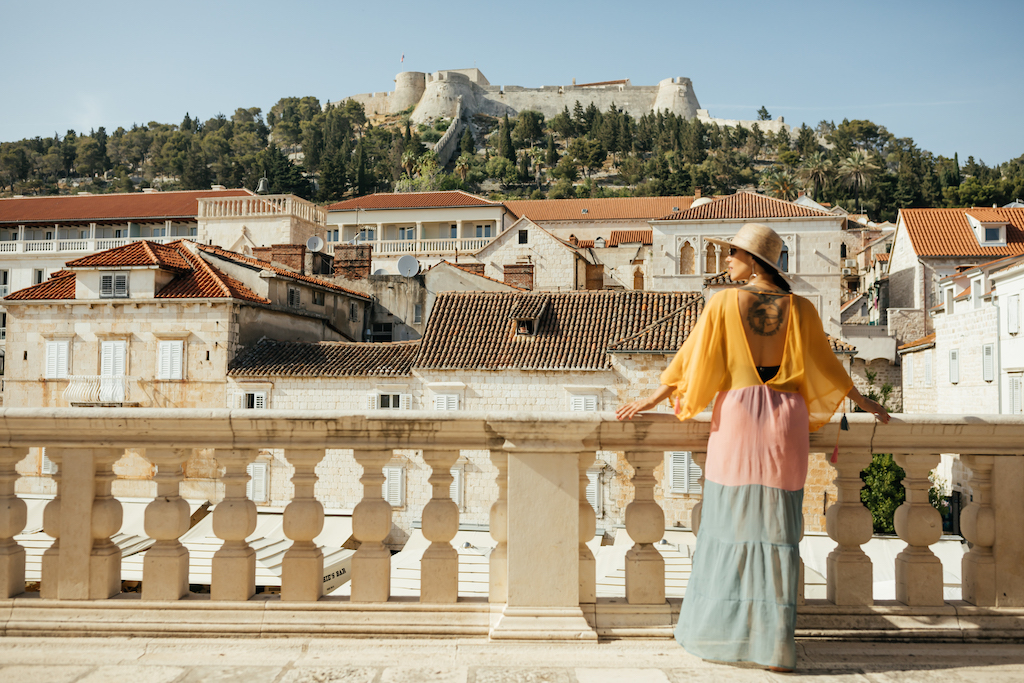
After overnighting in Hvar town, the next destination was the Pakleni Islands. While sailing, Instagram stories lit up with beautiful sea views. The influencer couple from Poland, known as Crolovepl, published a beautiful shot of sea foam on the surface, and their compatriot Anna Wizental enthusiastically posted a photo of the enchanting turquoise sea, which shows a white sandy bottom. The group sailed, partied, and feasted, and when "Makeba" came on the playlist, the digital divas gave up sunbathing and danced to irresistible African and French rhythms. This exciting musical melange, a favorite background on Instagram Reels for months, could easily be the official soundtrack of this gathering where the essence is getting to know different cultures, dynamism, creativity, and positivity.
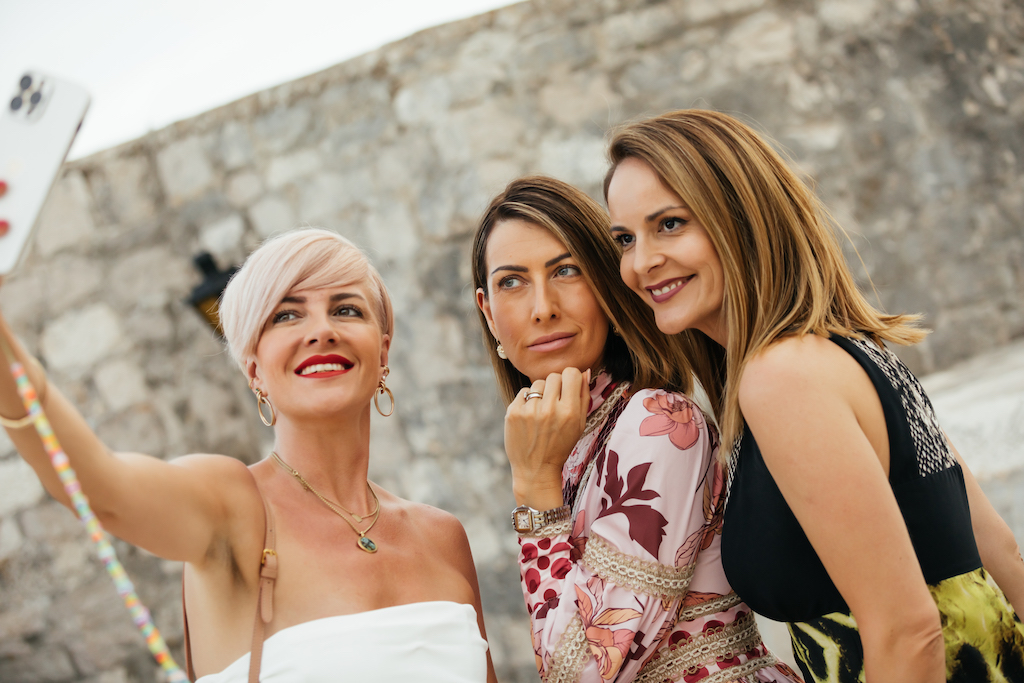
The Pakleni Islands also played the host of a great lunch in an ambiance that reminded many of sumptuous Greek restaurants. Seeing the beautiful interior in natural materials, bright wood colors, and cute swings, the influencers were happy with their aperitifs - fine white wines and cocktails with decorative flower petals.
The final day took off to the intriguing Inland Dalmatia, a visit to Sinj and the Sinjska Alka Museum, the Kamičak fortress, and the enigmatic gems of the Imotski region - the Red and Blue Lakes!
All photos by Goran Jovic
For more, make sure to check out our dedicated lifestyle section.
Hotel Riva Marina in Hvar Town Opens to First Guests Today!
June 3, 2022 - The newly-renovated Hotel Riva Marina in Hvar town opens today!
Situated in the Hvar city center, this historic gem boasts 50 uniquely decorated rooms and suites and a stunning terrace with outdoor seating and a bar area. The hotel was completely renovated this year.
Namely, Suncani Hvar Hotels completed the 40 million kuna renovation of Hotel Riva Marina to ensure it would be ready for its June opening.
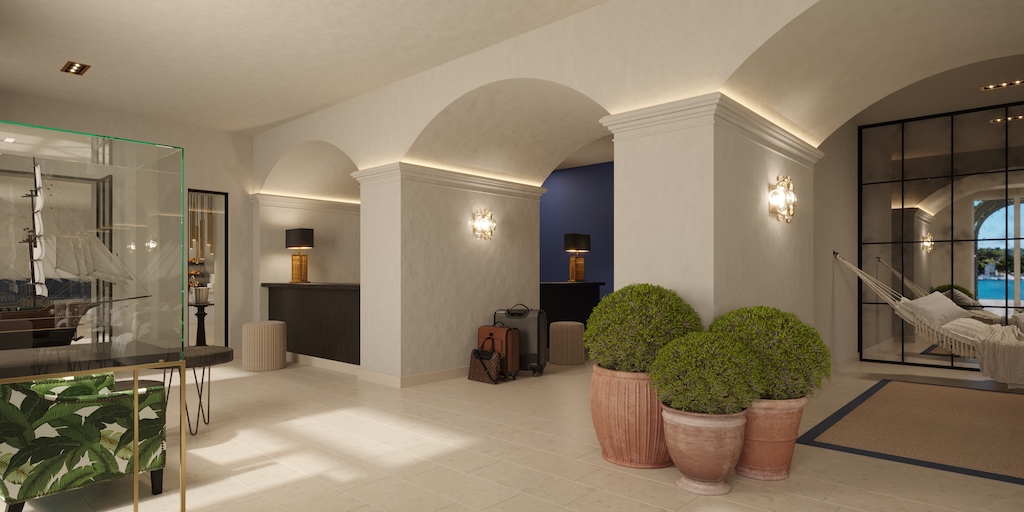
Hotel Riva was one of the first hotels in Hvar town, opening in 1914, precisely 15 years after the historic Hotel Elisabeth. It was named Hotel Kovačić after the initial founder of the hotel and named 'Riva' in 2006 when it was completely renovated. In 2022, this century-old hotel with striking and original architecture changed its name to Riva Marina, emphasizing its first-class position in the heart of Hvar's marina. The hotel is intended for guests who expect superior service and high-quality accommodation and will primarily be focused on the British and American markets.
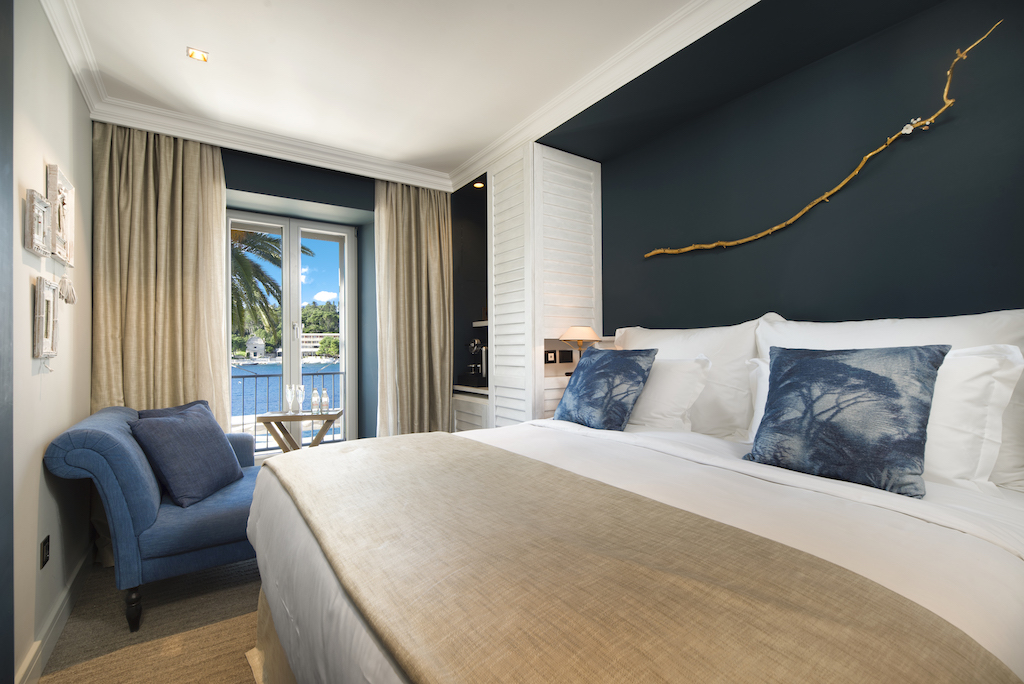
Thus, the Riva Marina Hotel has 50 new unique rooms and suites made for complete comfort and enjoyment. The carefully designed and executed interior design further emphasizes the historic building itself and its quality is harmonized with the most prestigious Hvar hotel Palace Elisabeth. The newly renovated hotel boasts a restaurant and bar, designed according to the latest standards and adapted to modern world travelers. Guests can enjoy a variety of delicacies and drinks on the iconic outdoor terrace with a unique view of the yachts and marina.
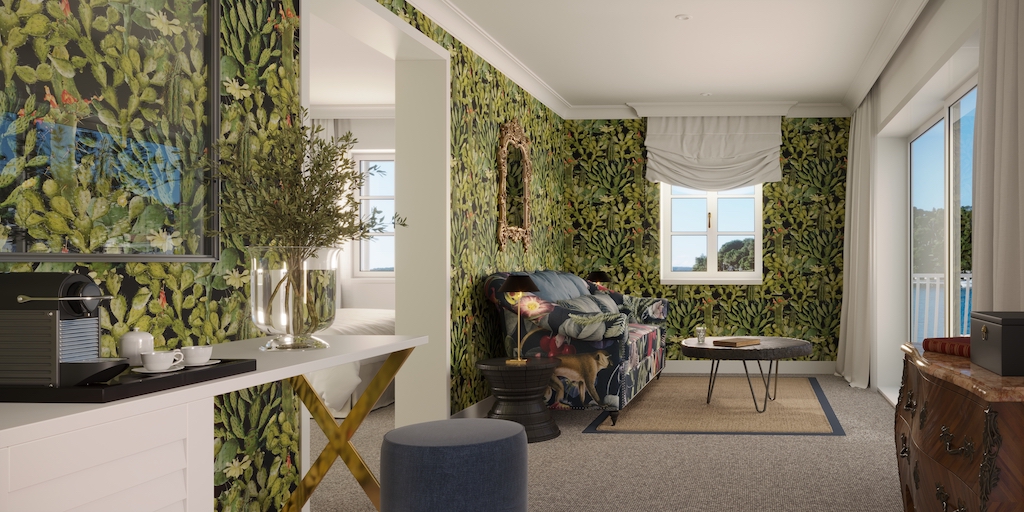
The project was entrusted to the architectural studio Tissa from Poreč, the interior design by Oto Blaha, and the contractor Kvantum from Zagreb.
Book your dream Mediterranean getaway today by visiting the Suncani Hvar website. And don't forget their other hotels on the island, including Palace Elisabeth, Adriana, Amfora, Beach Bay, Pharos, and Hotel Delfin!
For more, make sure to check out our dedicated lifestyle section.
Suncani Hvar Continues Investment Cycle: New Riva Marina Hotel Opens in June!
May 4, 2022 - The new-and-improved Riva Marina Hotel by Suncani Hvar opens in Hvar town just in time for the summer!
The start of summer is well and truly around the corner, though we're already feeling a breath of what it used to be with a tourism boom since the long Easter holiday weekend. With Covid measures lifted and travelers back to planning trips as scheduled, all forecasts reveal a standout summer ahead, which will be enhanced this year on Hvar thanks to the newly renovated Riva Marina Hotel.
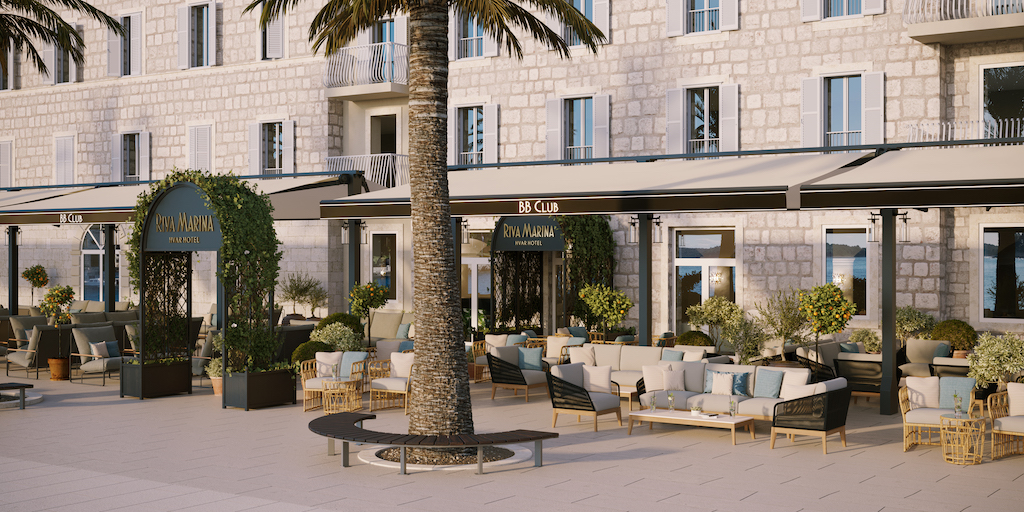
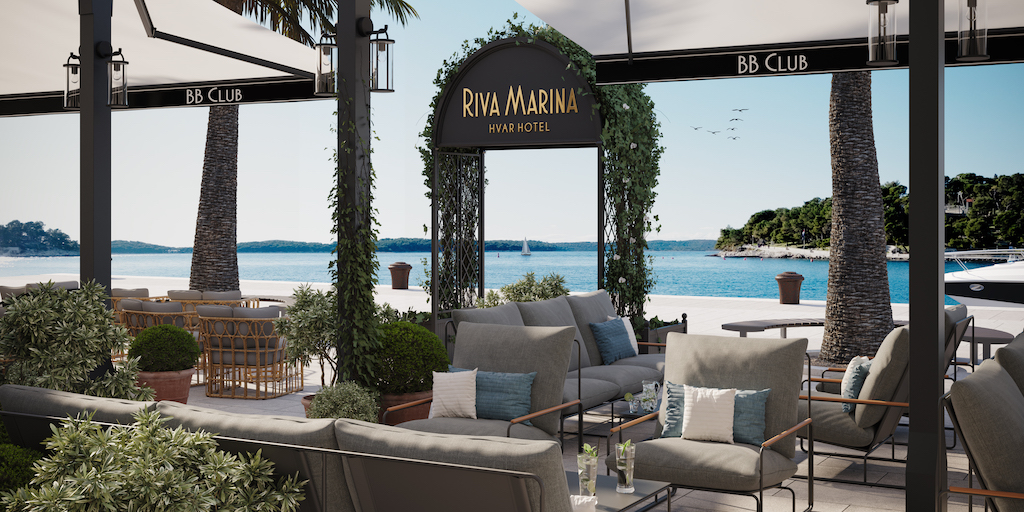
Namely, Suncani Hvar Hotels continues with intensive investments in 2022 to strategically reposition its portfolio towards high-quality offers and services. The most significant investment this year is the complete renovation of the Riva Marina Hotel, worth 40 million kuna. The planned opening of the newly renovated hotel is at the beginning of June.


Hotel Riva, located in the center of Hvar, is one of the first hotels in Hvar town, opening in 1914, precisely 15 years after the historic Hotel Elisabeth. It was named Hotel Kovačić after the initial founder of the hotel and named 'Riva' in 2006 when it was completely renovated. In 2022, this century-old hotel with striking and original architecture will change its name to Riva Marina, emphasizing its first-class position in the heart of Hvar's marina. The hotel is intended for guests who expect superior service and high-quality accommodation and will primarily be focused on the British and American markets.
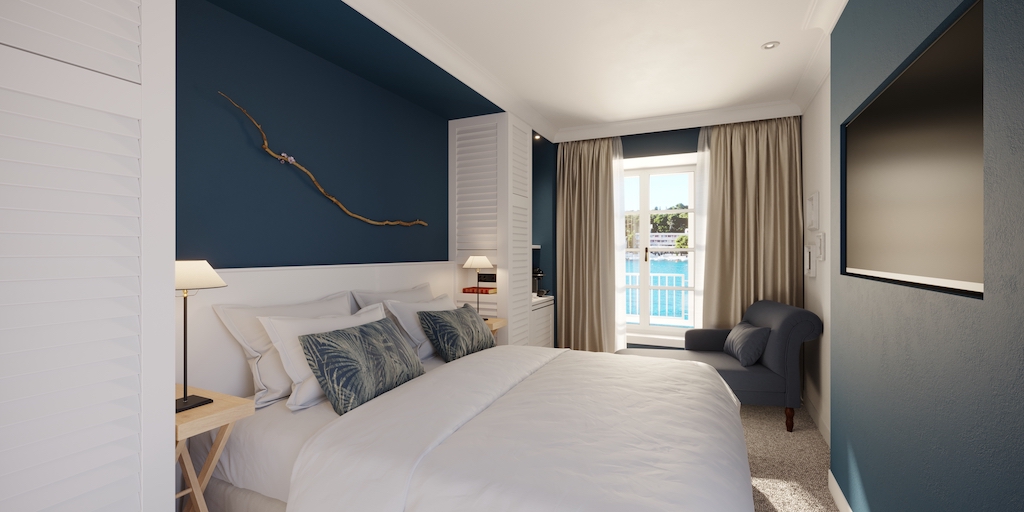
 "Today, trends in the hotel industry are changing rapidly, and it is important to keep up with new challenges and competition, both in Croatia and in the wider world market. The Riva Marina hotel renovation confirms the company's development strategy, aimed at continuously improving the quality of portfolios and services for high-paying guests, which will further raise the competitiveness of the entire Hvar destination," said Gordana Tomičić, President of the Management Board.
"Today, trends in the hotel industry are changing rapidly, and it is important to keep up with new challenges and competition, both in Croatia and in the wider world market. The Riva Marina hotel renovation confirms the company's development strategy, aimed at continuously improving the quality of portfolios and services for high-paying guests, which will further raise the competitiveness of the entire Hvar destination," said Gordana Tomičić, President of the Management Board.

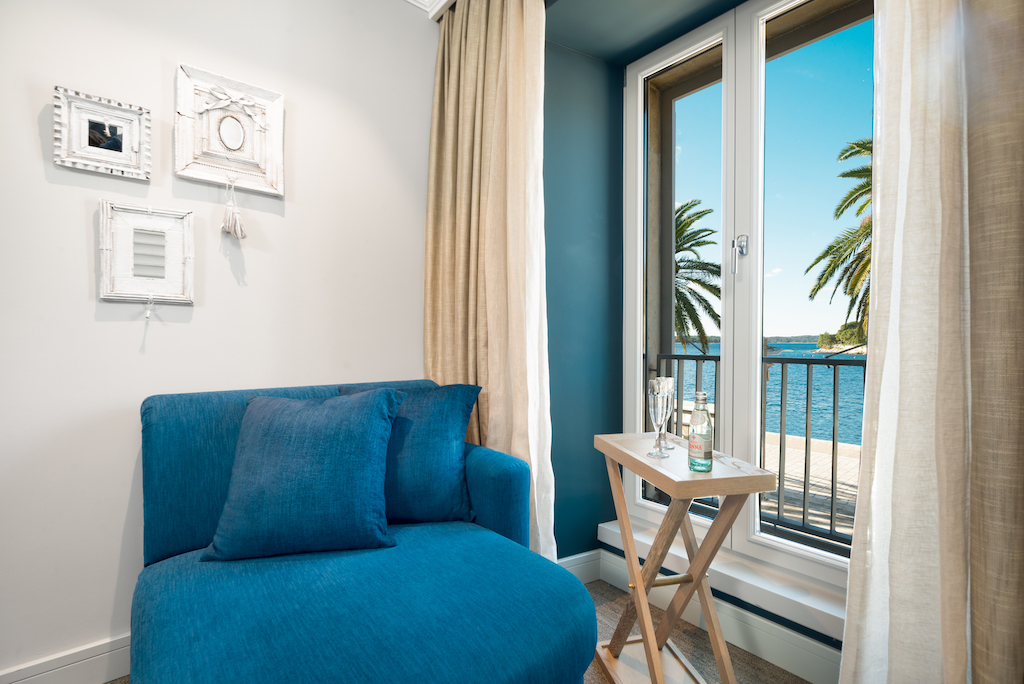
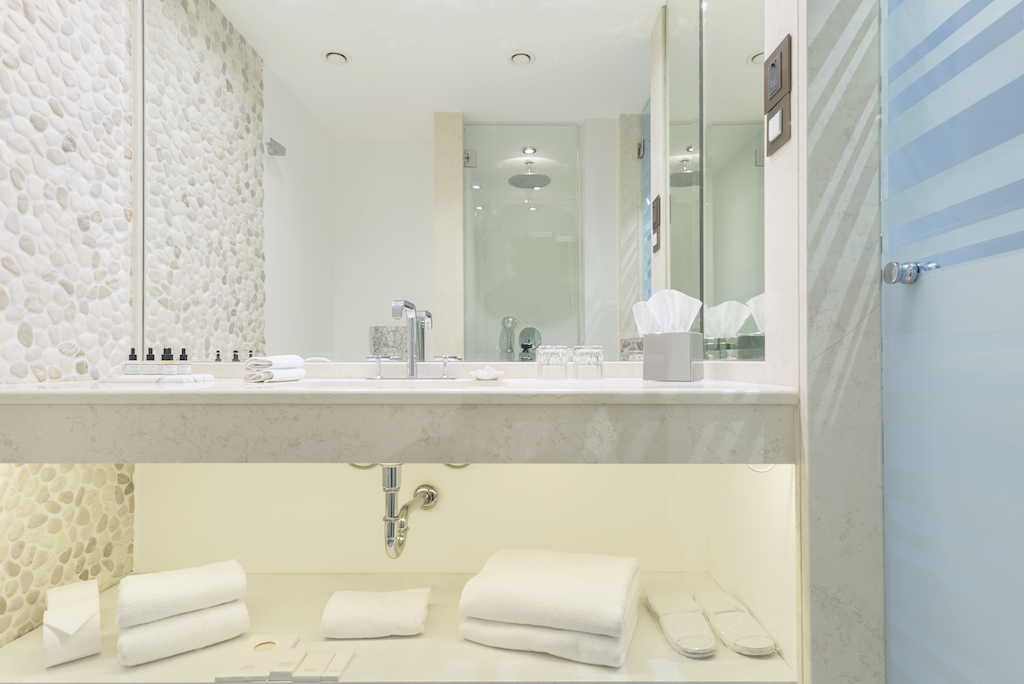
Thus, the Riva Marina Hotel will have 50 new unique rooms and suites ready for this season, providing every guest with complete comfort and enjoyment. Carefully designed and executed interior design further emphasizes the historic building itself, and its quality continues the direction harmonized with the most prestigious Hvar hotel Palace Elisabeth. The newly renovated hotel will also have a new restaurant and bar concept, designed according to the latest standards and adapted to modern world travelers. Guests will enjoy a variety of delicacies and drinks on the iconic outdoor terrace that offers a unique view of the yachts and marina.
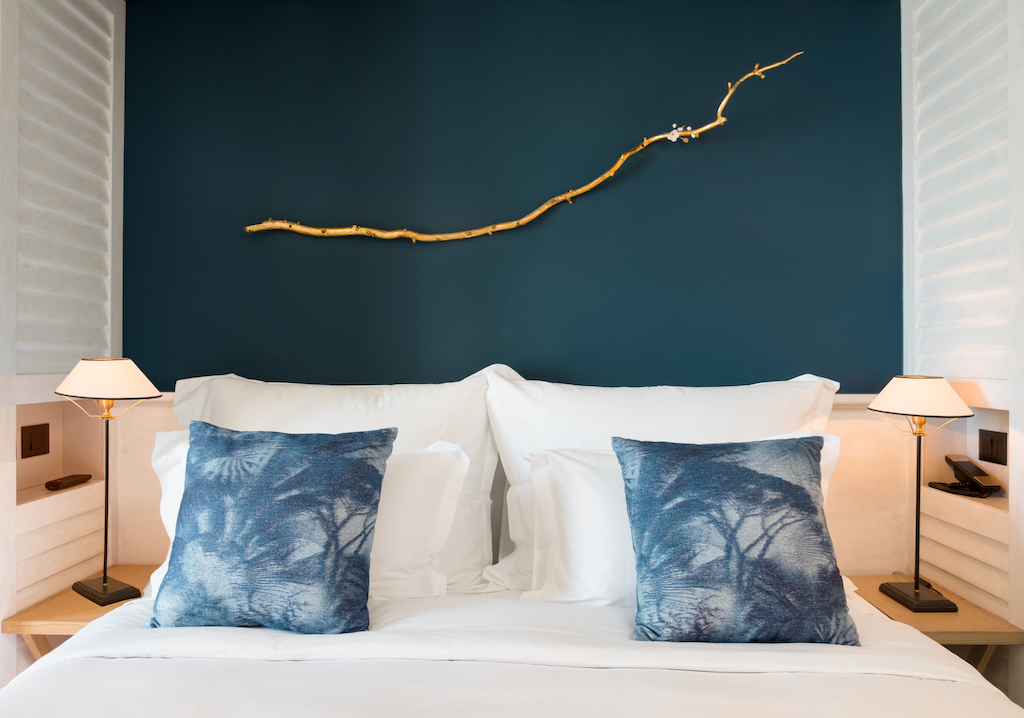
The project was entrusted to the architectural studio Tissa from Poreč, the interior design by Oto Blaha, and the contractor Kvantum from Zagreb.
For more, make sure to check out our dedicated lifestyle section.
Green Tourism: Sunčani Hvar Hotels to Open First Sustainable Hotel in Hvar Town
April 21, 2022 - The first sustainable hotel in Hvar town designed according to the latest environmental principles will open in July this year.
It is located in the city center, on the famous Hvar waterfront. The hotel in question that is being renovated is the annex of the old hotel Dalmacija. Upon completion, this 4-star hotel will shine in new splendor. Moreover, it will be renamed Beach Bay Hvar Hotel, which will emphasize its superlative position along a natural pebble beach a few meters from the entrance to the hotel. All rooms and suites have a view of the picturesque bay, the Franciscan monastery, the Hvar bay, and the Paklinski Islands.
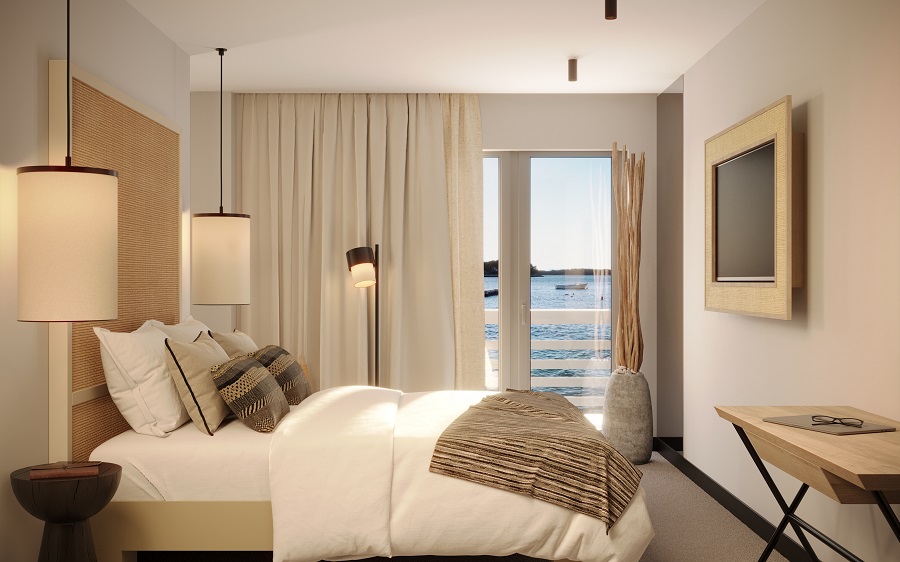
The investment is valued at 22 million HRK, and after the renovation, the hotel will receive 21 completely renovated accommodation units with carefully designed interior details. Rooms and suites are harmoniously decorated, with natural fabrics and materials, and provide guests with complete comfort at all times. The hotel is entirely designed according to the principles of sustainable development so that guests can enjoy a pleasant and environmentally conscious vacation.
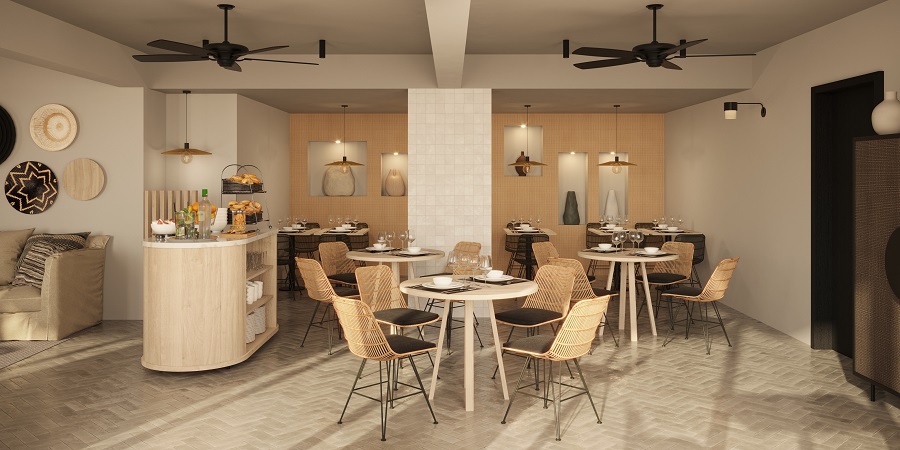
"The development of "green hotels" is the future of sustainable tourism and represents an opportunity to completely transform the accommodation offer. By renovating Beach Bay Hotel, we are establishing the concept of sustainable development that communicates built-in values with modern and environmentally conscious guests. This way we are preserving the natural environment and the authentic offer of the local community," commented the President of the Management Board Gordana Tomičić.
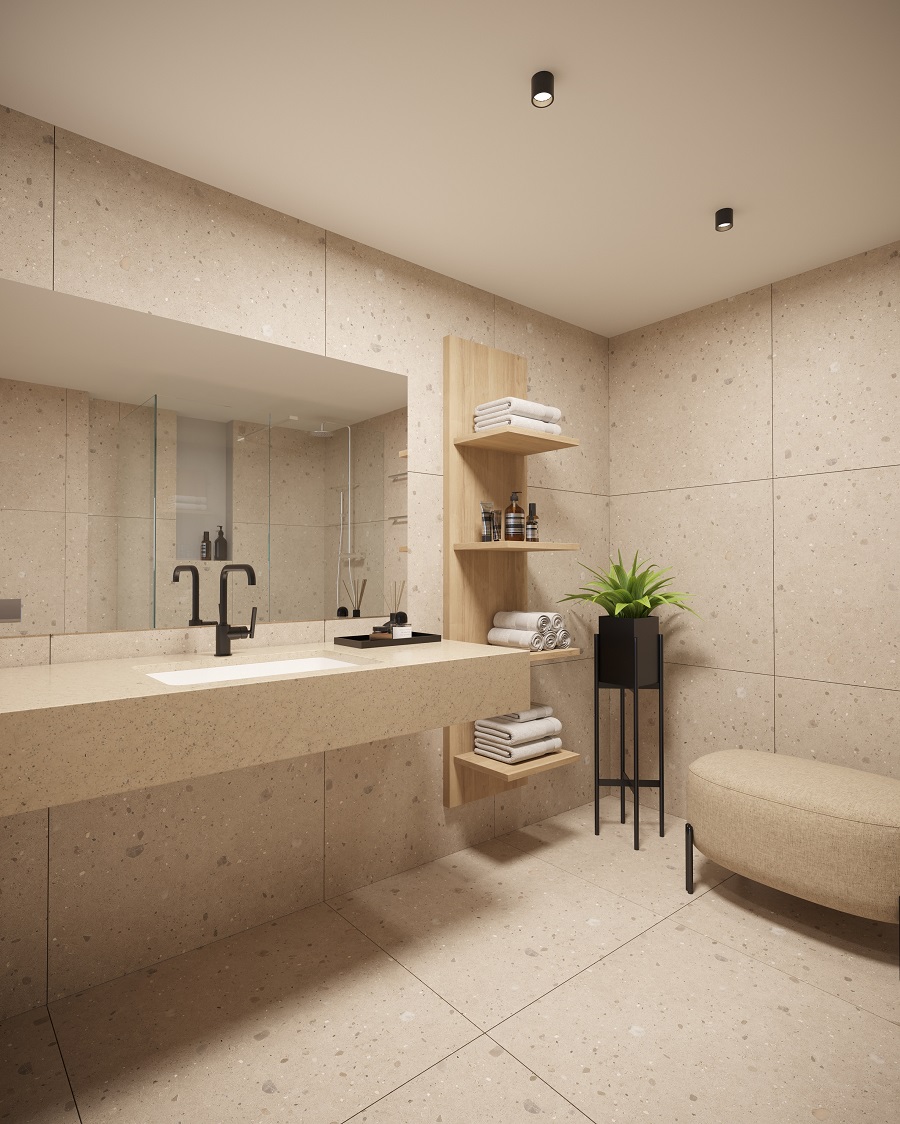
The island of Hvar is the sunniest island in the Mediterranean. With 2843 hours of sunshine a year, solar energy is a natural solution and the best renewable energy source. The hotel is equipped with solar panels and energy-efficient equipment to increase the energy efficiency of the building. Special emphasis is placed on local foods and products from small local suppliers, in order to support the local community and provide guests with an authentic experience when holidaying on the island.
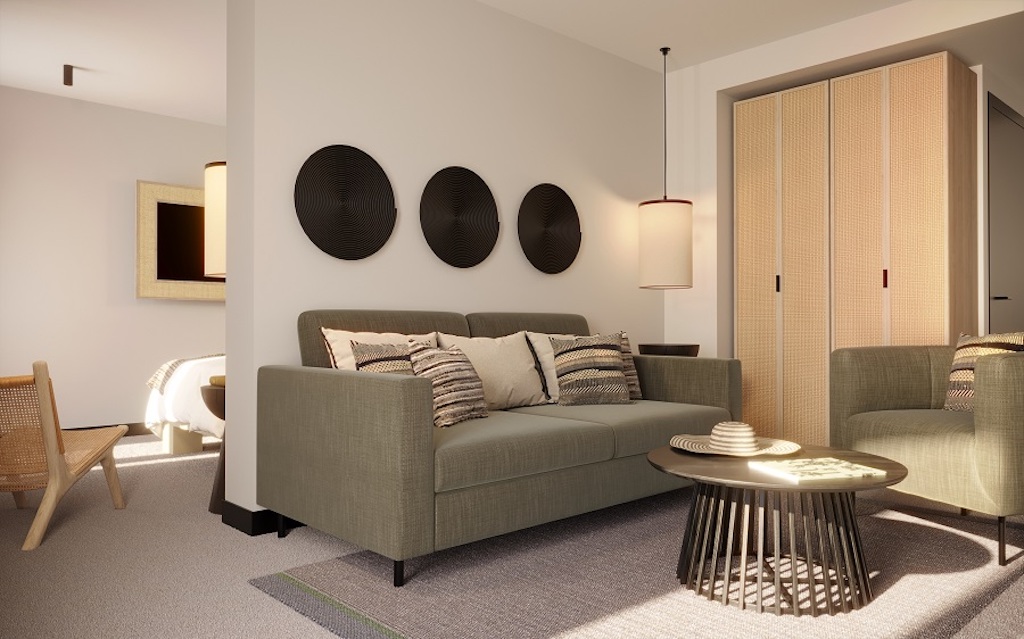
The project is assigned to the architectural studio Tissa from Poreč. The contractor is Slavonska gradnja.
For more, check out our lifestyle section.
Ancient Adriatic Treasures Discovered Near Hvar
April 15, 2022 - Significant progress has been made in the research of the seabed around Hvar, testifying to the island's importance as far back as ancient times thanks to new Adriatic treasures found.
As 24Sata writes, iron ship cannons, amphorae for the transport of wine and olive oil, ceramic vessels, and many other items are just some of the findings of the latest research on the seabed of the island of Hvar. The findings prove that Hvar was an important maritime center 3000 years ago, in fact, one of the "guardians" of traffic in the Adriatic Sea. Research of the Hvar seabed has been going on for decades, and the last one was conducted by the company Khantaros, along with the Art Academy of the University of Split which both specialise in underwater research. All was done with the support of the Split-Dalmatia County through the project "Maritime is good!". According to everything that was found, Hvar was one of the important points for the control of maritime routes and the establishment of maritime dominance in the Adriatic and the eastern Mediterranean during late antiquity.
In certain positions that show the highest density and value of material archaeological research using a probe will continue, with expectations of finding extremely valuable archaeological artifacts. This research could provide key information about the history and archeology of Hvar and Dalmatia in general. 24Sata spoke about the details with the head of the research, Teo Katunarić Kirjakov, a senior lecturer at the Academy of Arts of the University of Split:
“Near the island of Šćedro, which means ‘Merciful Island’ in Old Slavonic, a real multitude of traces of life from all periods have been found. Šćedro has always been an island that has protected sailors in its safe harbours, from prehistoric times to the present day”.
However, the "Merciful Island" failed to provide a haven for a cargo ship with wine amphorae from the second or first century BC, which was caught in a storm and violently pulled to the seabed. Neatly arranged amphorae of the ship's cargo still lie intact in the depths of the sea. It is the only fully preserved ancient shipwreck in the Split-Dalmatia County and as such we must preserve it, said Tea Katunarić Kirjakov and added that extremely valuable finds were discovered in the bay of Stari Grad:
“The bay of Stari Grad is deep and well protected from almost all winds, and people have lived along the shores of the bay since prehistoric times. And then in 385/384 BC the Greeks from the island of Paros founded a colony at the bottom of the bay of today's Old Town and named it Faros”.
The Greeks not only significantly changed the appearance of the islands they occupied but also the appearance of the coast and the seabed of the bay. It is not certain what the seashore next to the town and the bay in front of it looked like in ancient times, but in the area of the Bonj bay, an artificial embankment along the rocky shore is visible. This is perhaps the most valuable and the only preserved part of the built ancient coast, as explained by Katunarić Kirjakov. Near the town of Sućuraj, in the far east of the island of Hvar, numerous valuable finds were also discovered:
“The eastern cape of the island of Hvar, Cape Sućuraj, and its deep well-protected bay was an unavoidable port in that waterway, while the oldest underwater find in the area is a Greek-Illyrian helmet from the fifth century BC”.
Finds from all periods have been recorded in the wider waters of Sućuraj, including a Roman shipwreck and a fighter plane from World War II - concluded Tea Katunarić Kirjakov, who went on to describe her personal experience of diving among objects hundreds and thousands of years old:
“It's a magnificent thing. The most impressive find is the Roman shipwreck near Šćedro, where all artifacts have been completely preserved, unlike many other locations that were devastated. By the way, parts of a Roman villa with a breakwater are also being explored under the sea near Šćedro. It is possible that the Roman ship that sank near the island was sailing toward it. And when you dive in and arrive at that world of peace and quiet that you disrupted after two thousand years, it’s simply indescribable. We must preserve such locations, we must not allow their devastation, concluded Katunarić Kirjakov.
24Sata also discussed the latest research with Igor Mihajlović, a senior conservator and archaeologist at the Department of Underwater Archeology of the Croatian Conservation Institute, who researched several shipwrecks in the Hvar area:
“The most recent site currently being explored is a shipwreck in the Pakleni Islands, which can be dated to the 17th century.
Three large iron anchors, six iron cannons, fragments of glass cups, several specimens of maiolica-type ceramic vessels, and numerous items related to the ship's weapons were found.
The interesting thing about this shipwreck is that the probe in the stern area found bone remains of a 170 cm tall man. Along with the bones, a bronze saint's medal from Rome was found, with the image of St. Longinus piercing Jesus on the Cross. These findings indicate a sudden sinking of a ship caused by extremely bad weather or an attack by another ship.
An extremely rare find was collected from the site – a ship bell made of bronze. So far only four ship bells from the period from the 16th to the 18th century have been found, concluded Mihajlović.
For more, check out our lifestyle section.
Hotel Adriana Opening, as a UNESCO Hvar Easter Beckons
March 31 - Easter is just around the corner, a magical time on Hvar, as Hotel Adriana opens its doors for the season.
And just like that, here we go again.
Having lived on Hvar for 13 years, I got used to the subtle changes not only in the seasons, but in the mindset towards the tourist season. The winters were longggg. Initially, locals were tending to their olives and relaxing after the stress of another good season. But by January, many were itching to get started again, to see more signs of life.
And then came the run-up to Easter, the opening of hotels and businesses, and the first sizable numbers of tourists, predominantly for the UNESCO-protected Holy Week procession called Za Krizen (Behind the Cross), which has taken place every year for more than 500 years, including in a refugee camp in the Sinai Desert during the Second World War, so that the cycle would not be broken.
As a local, after a long winter with many businesses shut, the sight of a new season beginning with the opening of restaurants and hotels in the Spring sunshine is a heartwarming thing. It makes one long for lazy summer days at the beach even more.
April is one of my favourite months of the year to visit Hvar. It still has that local, pre-season feel, where the locals have time to chat, and where the businesses that are open are welcoming and reasonably priced. It feels at times that tourists and hosts are sharing a guilty secret - off-season Hvar is really pretty cool, just don't tell anyone.

So it is nice to see Suncani Hvar announcing the opening of Hotel Adriana on Saturday. The 4-star wellness hotel is a popular venue, with its spectacular waterfront views overlooking the fortress, main square, fabled Hvar riva and the Pakleni Islands. The views from the Top Bar are among the best there are on the island, a delightful spot for a coffee or something stronger.
Hotel management must be a very stressful business in these trying times, but it seems that the Hvar hoteliers are confident of a good season, with all its flagship hotels scheduled for opening this summer. Hotel Amfora and 5-star Palace Elizabeth hvar heritage hotel will open at the beginning of May, and Hotel Riva at the beginning of June.
One of the big advantages of visiting, apart from the lack of crowds, is of course the price. A Spring offer from Hotel Adriana looks a real bargain for those looking to explore Croatia's premier island at this time of year:
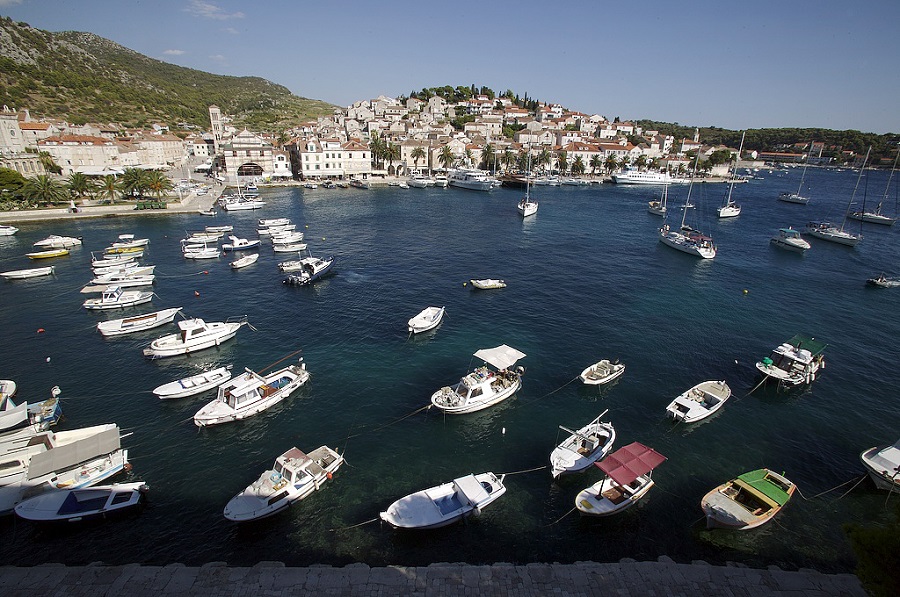
INCLUDED:
✓ Price from 59 EUR per person with breakfast included ✓ Bottle of house wine ✓ 10% discount in restaurants and bars
TERMS:
✓ Stay period April ✓ Min stay 2 nights ✓ Free Upgrade upon availability.
The winter cobwebs are being slowly brushed away, and another season in Paradise awaits.
To learn more about the Hvar hotel opportunities, visit the Suncani Hvar website.
To learn more about this magical town, check out the Total Croatia Hvar guide.
Jelsa Trail Race to Showcase UNESCO Heritages of Hvar Island
March 15th, 2022 - An exciting event has been announced by the Jelsa Tourist Board: the first trail running race to take place in this part of Hvar island
The recently announced Jelsa Trail is a bit different than your average trail race. Namely, it will retrace the route of the renowned procession Za križen (Behind the cross), which takes place every Maundy Thursday on Hvar island. The race is scheduled for Saturday, April 23rd, ten days after the traditional procession.
And what a setting for a trail race! Hvar island boasts no less than six UNESCO heritages, Za križen being one of them. You’ll get to discover a few more as the immensely scenic trail takes you through olive groves and vineyards, with cerulean waters of the Adriatic as a backdrop. The route runs through the Stari Grad Plain and along numerous dry stone walls, both UNESCO heritages.

Participants can compete in one of three categories, all endearingly named after a few local favourites:
Srdelica (Sardine) - 5 km, +260 m
The shortest and easiest route Srdelica is beginner-friendly and a perfect choice for those who’d prefer to participate in a more casual manner, soaking in the sights while they walk the trail at a comfortable pace. The trail starts and ends on the waterfront in Jelsa, in the meantime offering wonderful views of island scenery, including the splendid view from the ancient tower Tor. There won’t be an aid station on this trail, and the time limit to finish the race is 2 hours.
Škarpina (Scorpionfish) - 11 km, +420m
This route is beginner-friendly, but also suitable for more experienced runners. The trail starts and ends on the waterfront in Jelsa. After the initial ascent and passing by the tower Tor, the trail continues to run through olive groves and vineyards to the picturesque Pitve village, then back to Jelsa. The trail will have one aid station in Pitve (7km mark), with 3 hours allowed to finish the race.
Šanpjer (John Dory) - 20 km, +620m
The longest route requires a higher level of physical fitness, but isn’t technically challenging. Like the other two, the Šanpjer trail starts and ends on the waterfront in Jelsa. After they pass by the ancient tower Tor, runners will head to Pitve and then follow the route of the renowned procession Za križen. The trail runs through gorgeous places in the environs of Jelsa: Pitve, Vrisnik, Svirče, Vrbanj and Vrboska. Two aid stations will be set up on this route, in Pitve (7km mark) and Vrbanj (12km mark). Four hours are allowed to finish this route, with an added time limit halfway through - racers are allowed 2 hrs 15 mins to reach the checkpoint in Vrbanj.
Sweet and salty snacks will be offered at the aid stations, together with fruit, water and juice. After the race, you can look forward to a proper Dalmatian feast in Jelsa, complete with klapa singing.
The winners will be awarded medals in the shape of Hvar lace, another iconic Hvar feature to bear a UNESCO title.
Interested? You can register for the race on Stotinka.hr - everyone who pays the entry fee before April 14th gets a t-shirt and a glass water bottle for free, both adorned with the Jelsa Trail logo.
Sunčani Hvar Hotels Spring Specials: Preseason Deals at Adriana & Amfora!
March 4, 2022 - Because you don't have to wait until the summer to visit Croatia's sunniest island. Sunčani Hvar Hotels Spring Specials are here!
It's no surprise that the glamourous Hvar town is one of the busiest summer hotspots in Croatia. Still, many may not know that the popular town is also a gem in the offseason months - and you get to experience it without the peak season crowds.
As a way to tempt travelers to Croatia's sunniest island in the calm before the tourism storm, Sunčani Hvar Hotels Spring Specials are here, with enticing offers at two of its most in-demand hotels - Adriana & Amfora!
Namely, spice up your Easter break with a minimum 2-night stay at Adriana spa hotel, with prices starting from 59 EUR per person and breakfast included! But that's not all. Adriana guests will receive a bottle of house wine and a 10% discount at its restaurants and bars during their stay. This offer is valid for the month of April with a free upgrade upon availability.
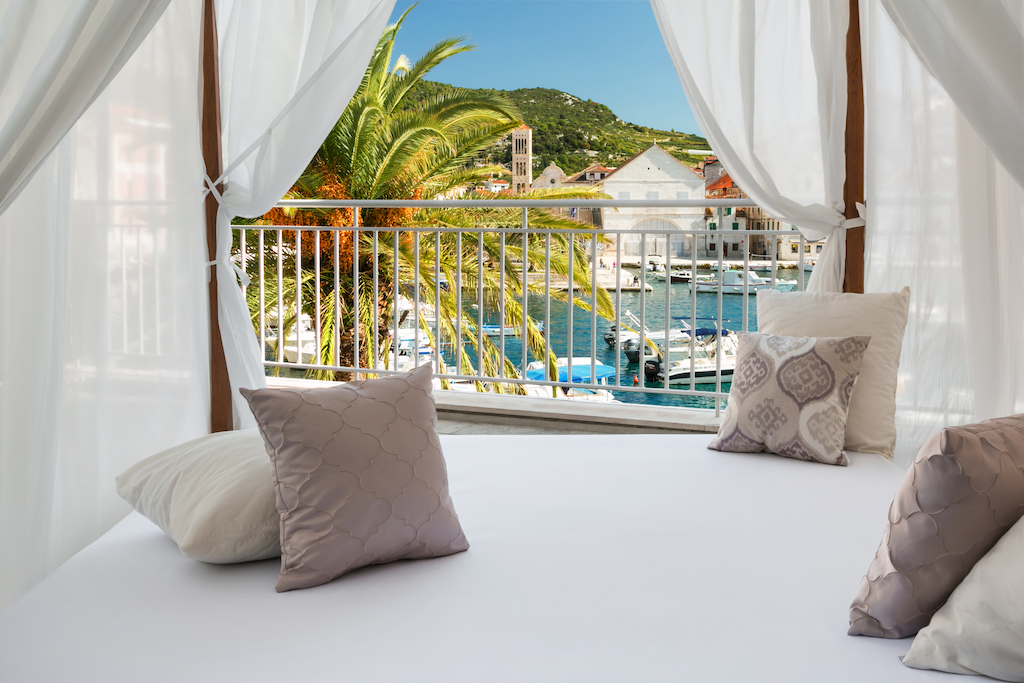
And if you can't make it in April but still want to explore the charms of Hvar this preseason?
Amfora resort has also announced a Spring Special during one of the most beautiful periods to visit the island. From 51 EUR per person with breakfast included (and a minimum 2-night stay), guests also receive a bottle of house wine, a 10% discount at its restaurant and bars, and a free upgrade upon availability. This offer, however, is valid from April 20 to June 1, 2022!
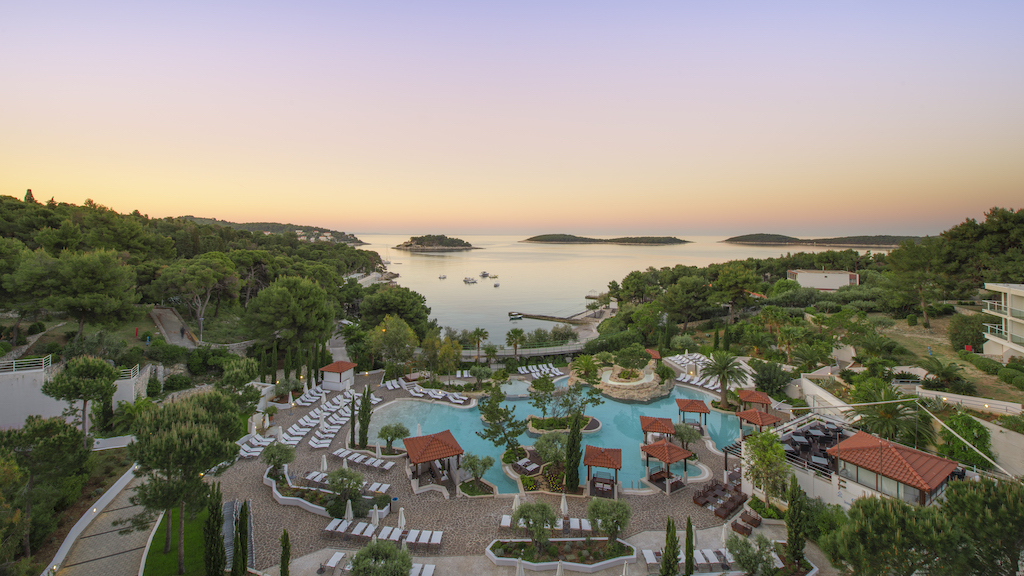
And should you need another reason to visit Hvar?
The island Hvar was voted the #1 island in Europe according to Condé Nast Readers’ Choice Awards, with readers naming its abundant nature, culture, and rich history as to why you should visit.
“With warm summers and mild winters, the island of Hvar is the sunniest spot in Croatia—there are over 2,800 hours of sunshine annually. It may be known for its beaches and turquoise water, but there’s another side to this resort island. From the town of Hvar on the island’s southern shore, make the slow, uphill climb to Tvrđava Fortica, a 13th-century fortress with the best views on the island. Pro tip: To see Hvar’s spectacular fields of lavender in full bloom, visit in early summer. The harvest takes place in late July, but you can buy all sorts of scented souvenirs in the local markets year-round,” writes Condé Nast Traveler.
Need we say more?
For more on travel in Croatia, follow TCN's dedicated page.


.JPG)
.JPG)
